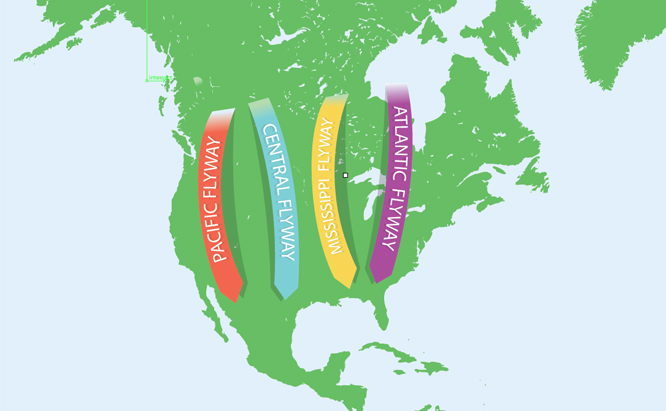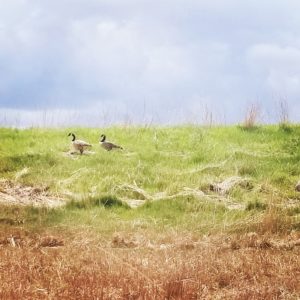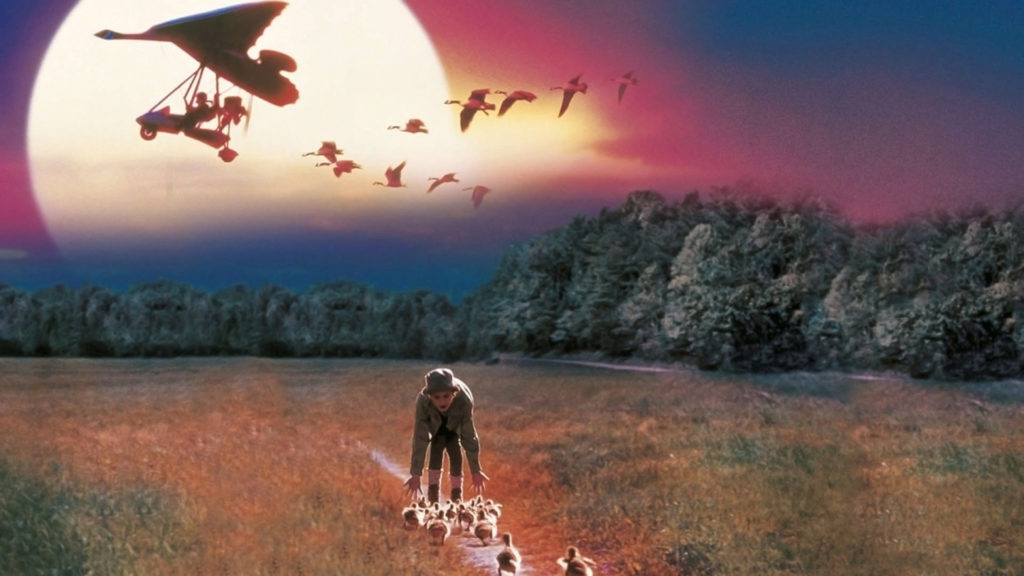Fly Away Home Goes the Distance
This week, Freshkills Park joins ornithologists and bird watchers to celebrate World Migratory Bird Day (WMBD). World Migratory Bird Day is the brainchild of three major global bird conservation organizations. Not all birds migrate at the same time of year, so the date varies by hemisphere. In the Northern Hemisphere the holiday falls on the second Saturday in May, and in the Southern Hemisphere it falls on the second Saturday in October. The holiday is not limited to one day, however. Migratory birds can and should be celebrated year-round!

Why do Birds Migrate?
Birds migrate based on their need for food and resources. All birds follow one of four migration patterns: permanent, short-distance, medium-distance, and long-distance. Permanent residents, like the cardinal, can find food and nesting sites year-round and do not migrate. As the seasons change, short-distance (change elevations) and medium-distance (across states) birds migrate in search of stable food sources. Long-distance birds migrate for nesting grounds. While traveling hundreds of miles might seem strange, about 350 North American birds migrate long distances.
North America has four major migration routes, known as flyways; the Pacific, Central, Mississippi, and Atlantic Flyways. They operate like airplane flight paths or bird highways. Birds that migrate in the Northeast US and nest at Freshkills Park use the Atlantic Flyway. These migration routes go back hundreds of years but are continually influenced by weather, resources, and habitat destruction. 
 As wetlands and grasslands continue to be endangered, migration routes are being compromised which results in declining populations of once-native birds. As we continue to practice social distancing, many are turning to nature and local birds for comfort and entertainment.
As wetlands and grasslands continue to be endangered, migration routes are being compromised which results in declining populations of once-native birds. As we continue to practice social distancing, many are turning to nature and local birds for comfort and entertainment.
To help bring the migratory birds inside, our FreshFlick of the week is Columbia Picture’s Fly Away Home. The movie, released in 1996, drew inspiration from the real work of Bill Lishman and his aircraft-led goose migration in 1993. The movie has us thinking, “Why do birds migrate?” and “How can I support migratory birds?”
FreshFlick of the week is Fly Away Home
Fly Away Home begins by setting up the dual conflicts that are later resolved through an amazing journey across North America. First, the native wetlands are damaged by developers, and then the main character, Amy, loses her mother. Amy, forced to move and adjust to a new normal, becomes interested in nature and finds abandoned geese goose eggs. She learns the parents left as a result of habitat destruction, and there are no local geese left to raise the eggs. In addition, she learns that goose babies, known as goslings, become imprinted to the first thing they see. goose parents use imprinting to guide their young along their learned route. Without any parents, Amy’s goslings could get lost or shot by hunters.

Canadian geese, like undeveloped land, are seen as useless and problematic by developers and uninformed citizens. Canadian geese in particular are drawn to manicured (turfgrass) lawns and their migration route is influenced by these desirable patches to pit stop. This can lead to some unfriendly legislation for the geese, like having their wings clipped. The native habitats are just as vulnerable as seen in the movie.
Amy and her father then “hatch” a plan to lead the geese 500 miles south using lightweight aircraft. The idea of using technology to change migration patterns was ridiculed by experts. They even joke about tiny robot birds (Flash forward 25 years and we have drone hummingbirds). Determined to proceed, Amy and her father identify 300 acres of preserved land to the south, in danger of being turned over to developers. These 300 acres were a bird refuge but are planned to be destroyed that fall, on November 1st. This deadline adds suspense and thrill to journey as the duo break laws, fly in naval air space, and suffer numerous setbacks.
Throughout the journey, Amy’s story becomes news and people became involved and supportive of their conservation efforts. They befriend the armed services and locals, and even receive directions from some pedestrians while flying over. By a feather, Amy and her geese arrive just as the construction vehicles rev their engines. As a result, the habitat and the geese are saved. In real life, all the geese returned the following Spring.
Fly Away Home Goes the Distance
 Fly Away Home is a great film with a great message about protecting native species and preserving endangered habitats. A few years ago, the idea of using technology to assist nature was dismissed, but now satellite technology is used to track migration routes. In addition, landfill capping technology has been used to reclaim habitat, just like Freshkills Park and Shirley Chrisholm Park. Freshkills Park is now an essential nesting ground for the Grasshopper Sparrow, Osprey and other exciting native birds.
Fly Away Home is a great film with a great message about protecting native species and preserving endangered habitats. A few years ago, the idea of using technology to assist nature was dismissed, but now satellite technology is used to track migration routes. In addition, landfill capping technology has been used to reclaim habitat, just like Freshkills Park and Shirley Chrisholm Park. Freshkills Park is now an essential nesting ground for the Grasshopper Sparrow, Osprey and other exciting native birds.
This World Migratory Bird Day, one great way to get active is to support reclaimed land efforts and organizations that work to provide green spaces for people and birds. Stay tuned for more about birds this week. On Wednesday, lean how researchers study birds by using an ethogram on the animals in your life, and on Friday, tune in for an update on Osprey nesting patterns at Freshkills Park.





